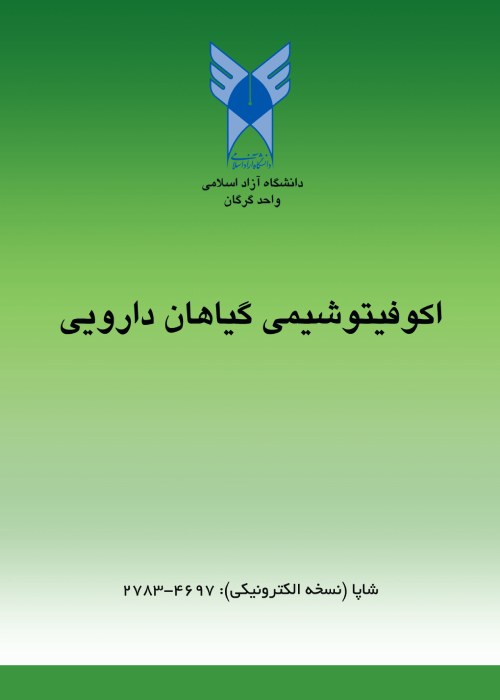Investigation of some growth and physiological traits changes and heavy metals accumulation in saffron (Crocus sativus L.) under different climates cultivation
Saffron (Crocus sativus L.) the most valuable agricultural and pharmaceutical product in the world, has a special place among Iran's industrial and export products. The aim of this study was to study the changes in quantitative, qualitative, physiological traits, and heavy metals accumulation in cultivated saffron samples in three important saffron producing provinces, North Khorasan (Shirvan city), Razavi Khorasan (Torbat-Heydariyeh city), and South Khorasan (Ghaen city), based on a randomized complete block design with three replications in 2019-2020 crop year.In this study, quantitative traits (flower and stigma yield), qualitative traits (safranal, picrocrocin, and crocin content extracted by aqueous method and measured by spectrophotometry), physiological characteristics (anthocyanin, flavonoid, total phenol, and antioxidant activity extracted by alcohol andmeasured by spectrophotometry) and the selenium, lead, and nickel metals accumulation (by acid extraction and atomic absorption measurements) were investigated. Also, the effect of climatic parameters on quantitative and qualitative yield was investigated. The results showed that the samples cultivated in these provinces had significant differences in terms of quantitative, qualitative, physiological, and metal accumulation characteristics. North and Razavi Khorasan provinces with the highest flowers and stigmas yield, as well as safranal and crocin content, had the highest quantity and quality.In addition, the highest anthocyanins, flavonoids, and total phenol content, antioxidant activity, and lead content was obtained in North Khorasan province. The two climatic parameters of relative humidity content and average annual rainfall had a high correlation with quantitative and qualitative yield and are the most influential environmental factors on the quantity and quality of saffron. In general, North and Razavi Khorasan provinces had a significant advantage in terms of quantitative and qualitative yield of saffron compared to South Khorasan provinces.
- حق عضویت دریافتی صرف حمایت از نشریات عضو و نگهداری، تکمیل و توسعه مگیران میشود.
- پرداخت حق اشتراک و دانلود مقالات اجازه بازنشر آن در سایر رسانههای چاپی و دیجیتال را به کاربر نمیدهد.


